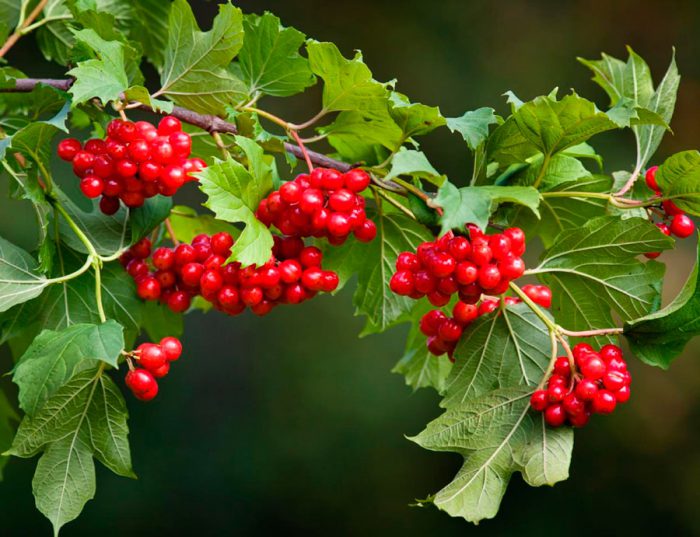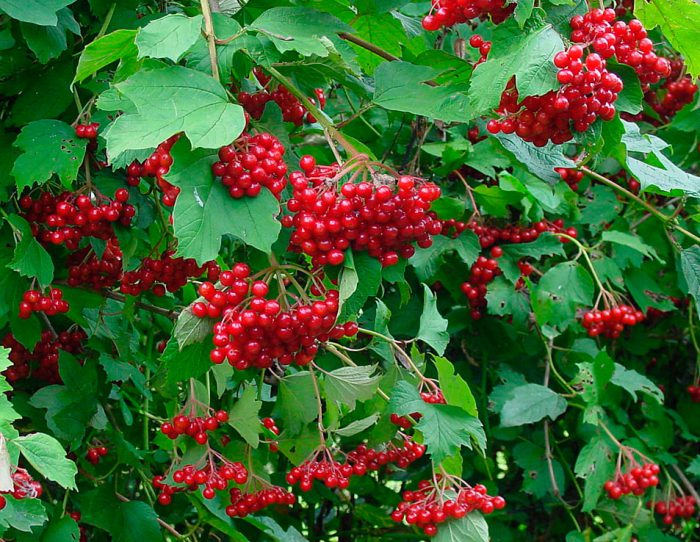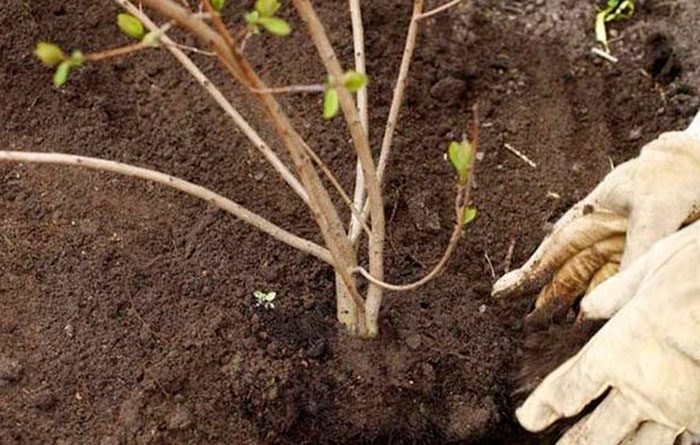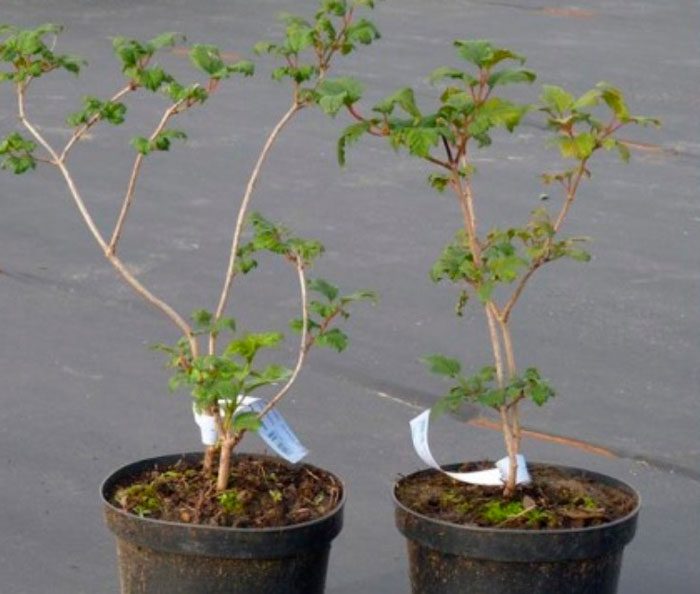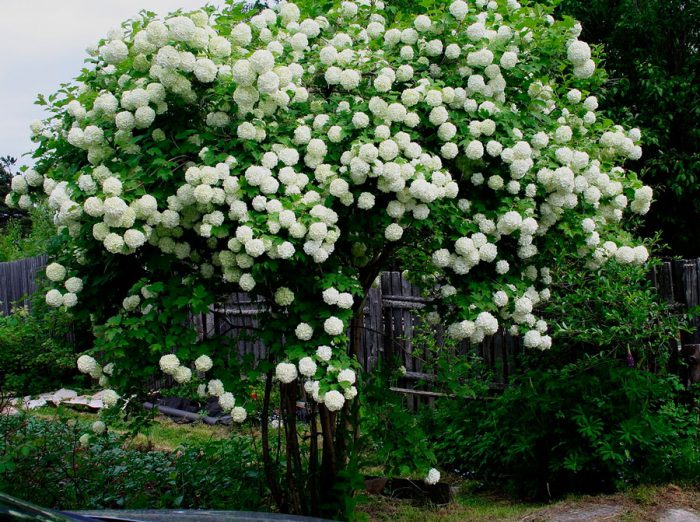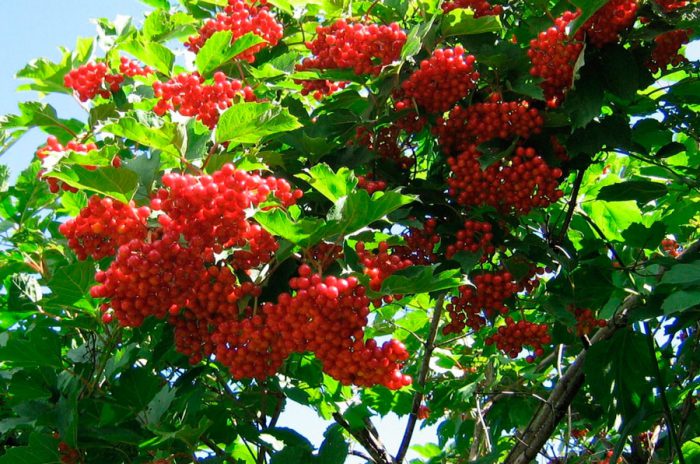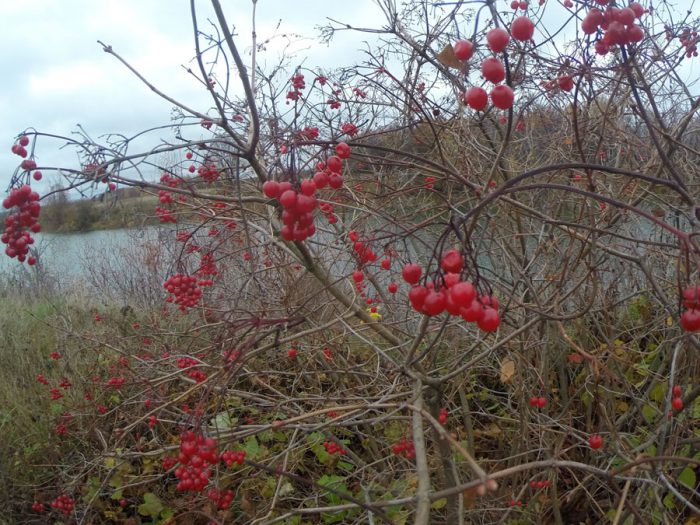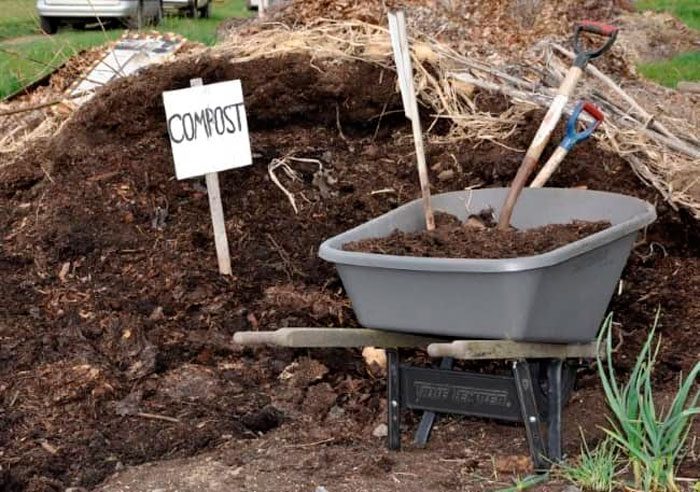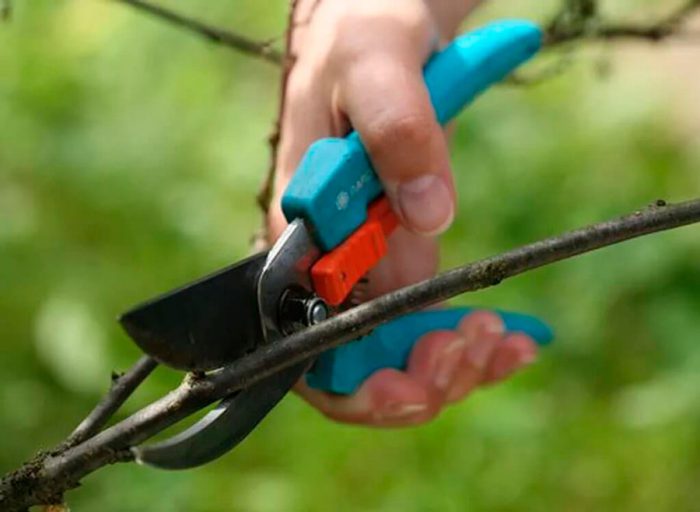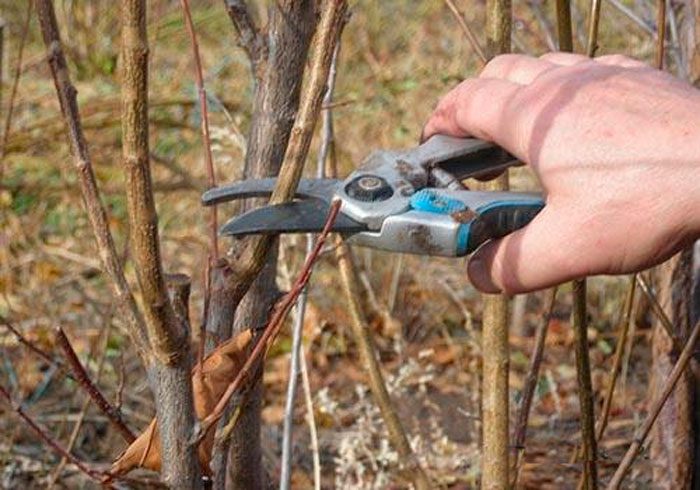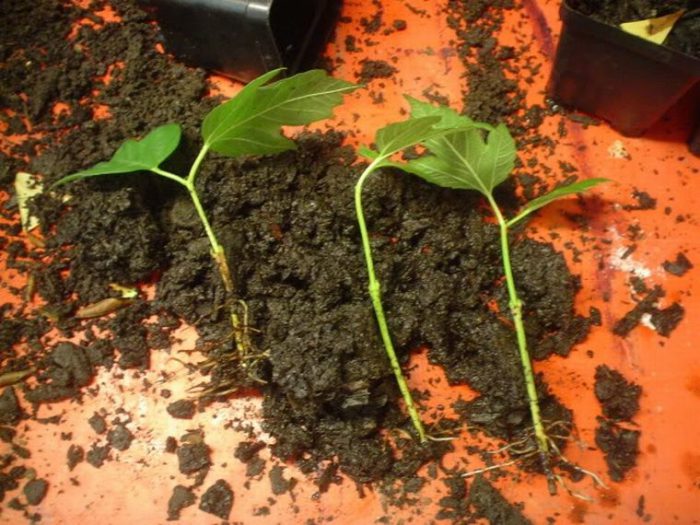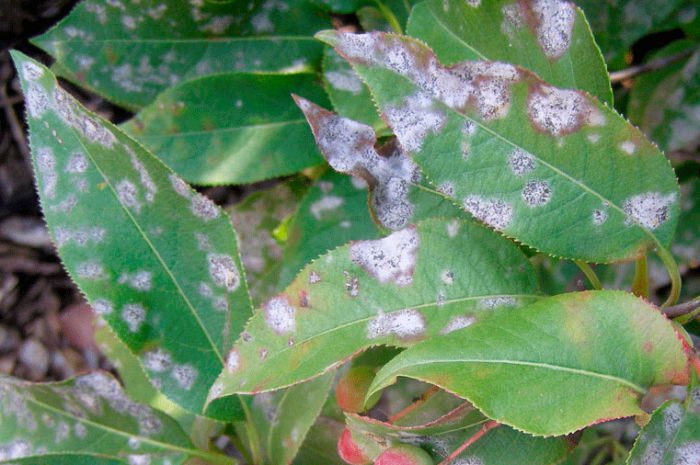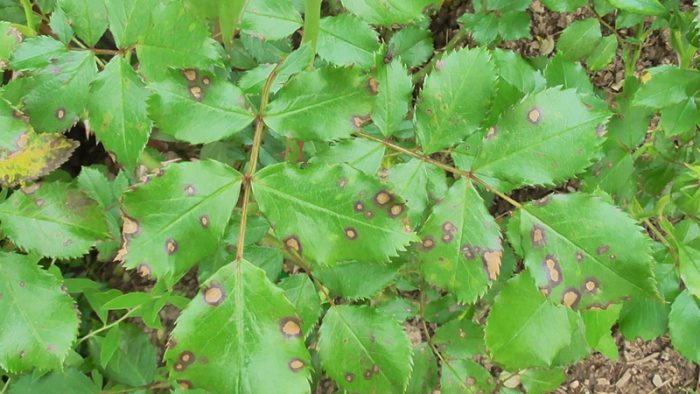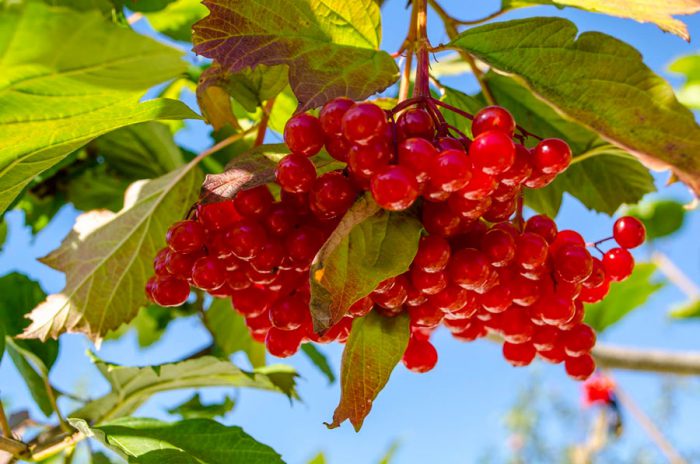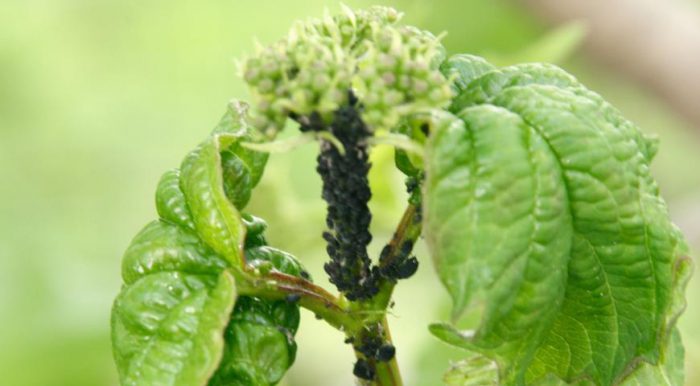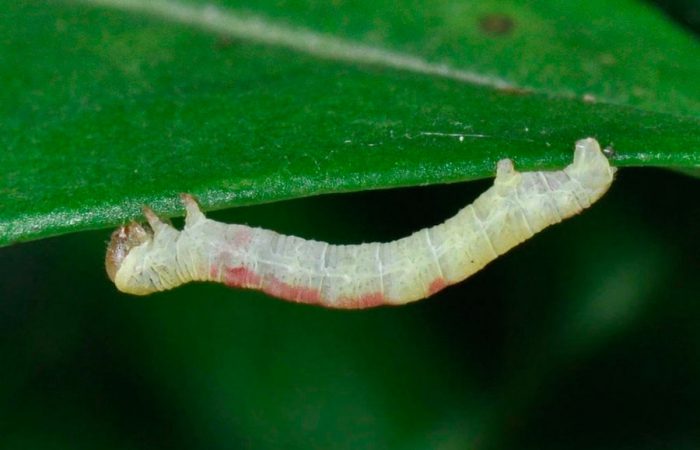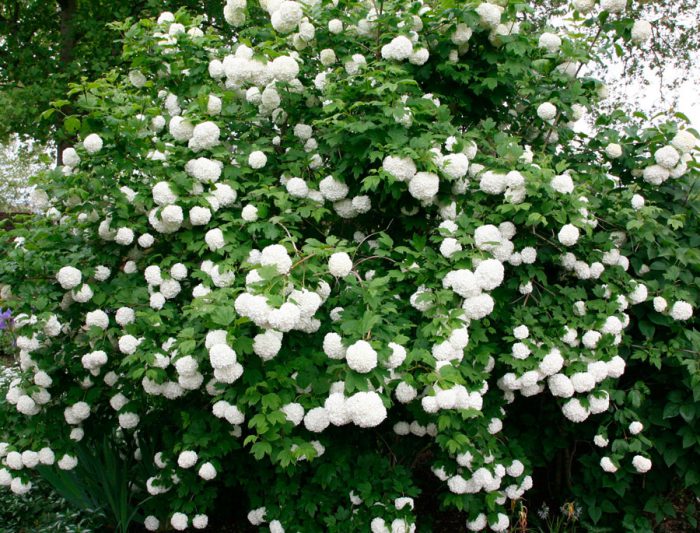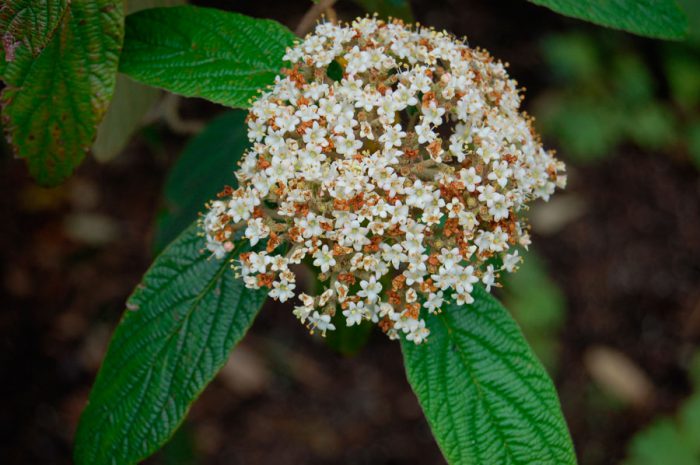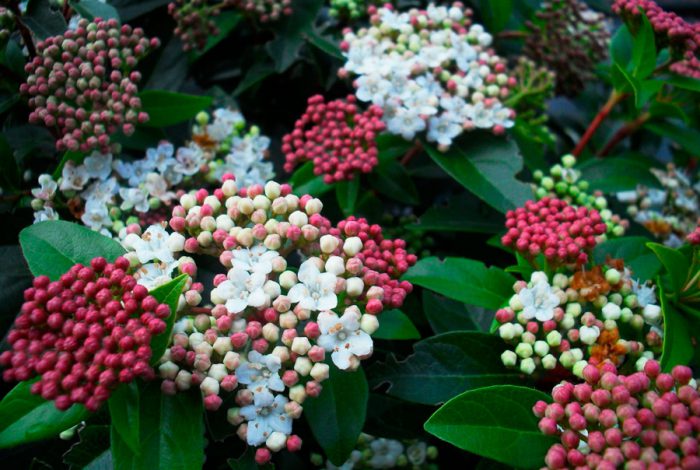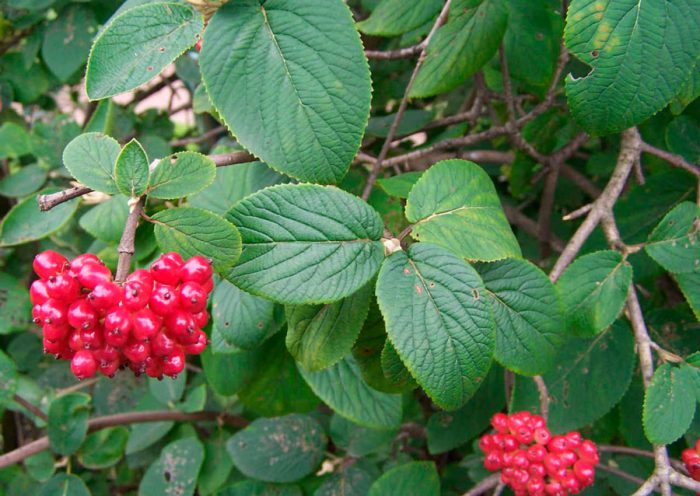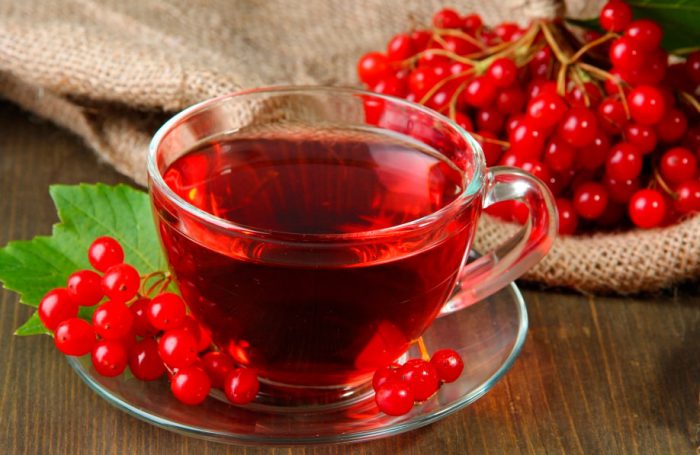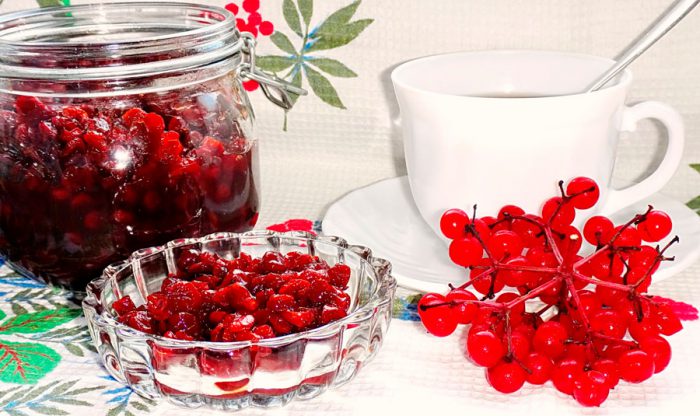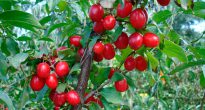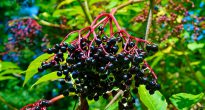Viburnum (Viburnum) is a genus of the adox family, it is represented by woody flowering plants. This genus unites more than 160 species. Such plants in natural conditions can be found in the temperate zone of the Northern Hemisphere, and also in the Antilles, in the Andes and in Madagascar. The name "viburnum" comes from the Slavic word, and this plant was named so presumably because the fruits seem to be red-hot, as they have a red color. In Slavic culture, there are a large number of sayings, legends, proverbs and legends associated with this plant. The common viburnum (Viburnum opulus) is the most common species in the middle latitudes. This plant also adorns some garden plots.
Content
Features of viburnum
Viburnum is a deciduous not very large tree or shrub. Falling simple leaf plates can be whorled or oppositely located, they are petiolate, they are whole-edged or dentate. Also, the leaves are palmate-lobed, lobed or whole. The color of the flowers is pink or white, they are part of the apical complex or simple umbellate-corymbose or umbellate inflorescences. Such a plant blooms in the last days of May or in the first days of June. The fruit is usually an edible drupe that is bluish-black or red in color. On average, viburnum can live from 50 to 60 years.
Today, this culture is increasingly grown by amateur gardeners, it is common in almost the same way as pear, cherry, apple, plum or sweet cherry.
Planting viburnum in open ground
What time to plant
Planting and growing viburnum is not difficult at all. For it, you should choose a neutral or slightly acidic (pH 5.5 to 6.5) soil. For planting it, you should not choose areas with podzolic, peaty or sandy soil. You also need to pay attention to groundwater, they must lie on the site at a depth of at least 100 centimeters. In order to extend the life of this plant and make it stronger and healthier, you should create conditions for it as close as possible to natural.
This crop can be grown in a well-consecrated area, but partial shade is better for this. According to some experts, pests settle on a bush growing in a shaded area much less often.
Viburnum seedlings are planted both in autumn and spring. Before planting, the site is digged, and all weeds are removed from it. If the soil on the site is nutritious, then the introduction of organic fertilizers into it will be superfluous. If the site is with poor soil, then fertilizers are applied directly to the planting hole during planting of the seedling.
Planting viburnum in spring
In springtime, the viburnum should be planted before the leaf plates open. The size of the landing pit should be 0.5x0.5x0.5 meters. In the event that several bushes are planted, then a distance of 2.5 to 3.5 meters should be maintained between them. When preparing the pit, the topsoil must be folded back separately. It is combined with 1 bucket of peat or humus and with a couple of glasses of Nitrofoski. 2/3 of the resulting soil mixture must be poured into the planting pit, and 40 liters of water are poured into it. The pit will be ready for planting in a few days. After about 7 days, the remaining soil should be poured into the planting pit with a mound, while it should rise above the surface of the site by 10-12 centimeters. For planting, a three-year-old seedling is used. Its roots should be installed on the resulting mound. After the roots are straightened, the pit must be filled with the rest of the soil mixture. The trunk circle of the planted plant must be tamped well, then it is watered abundantly. When the water is absorbed, the surface of the trunk circle should be covered with a layer of mulch (peat, compost or humus). It is necessary that after planting, the root collar of the viburnum is about 50-60 mm buried in the soil.
Planting viburnum in autumn
In autumn, a viburnum seedling is planted in open soil in the same way as in spring. It is necessary to plant during the period of leaf fall, while it is necessary to have time before the first frost.
Viburnum care
Viburnum care in spring
In the last days of March or the first days of April, the site should be cleaned from the foliage that fell last year. The surface of the trunk circle must be loosened. After a little time, it is necessary to carry out preventive treatment of the viburnum with fungicides, which can destroy all pests and pathogenic microorganisms that have settled down for wintering in the bark of trunks and branches, as well as in the upper layer of the soil. For processing, you can use a urea solution (7%), it will not only destroy pathogens and pests, but also become a source of nitrogen, which is so necessary for Kalina in spring. However, it should be noted that it is impossible to spray the plant with urea if its buds have begun to open, otherwise they may burn out.
Around the middle of May, the bushes are fed with potash fertilizers. When the viburnum finishes blooming, complex fertilizer will need to be applied to the soil of the trunk circle.
Viburnum care in summer
Carry out a systematic examination of the bushes for pests or signs of disease, if necessary, carry out appropriate treatment. In the first days of summer, it is recommended to process the viburnum with tobacco infusion, or from June until the very harvest of the fruits, systematically spray the plants with an infusion prepared from onion husks, potato tops or garlic.
In addition, in the summer, the viburnum must be systematically watered, loosened the surface of the trunk circle and remove weeds.
Viburnum care in autumn
When all the leaves fall off the viburnum bush, they will need to be raked, like the old mulching layer. Then the plant is treated for the prevention of various pathogenic microorganisms and pests that prefer to winter in the bark of a bush or in the upper layer of the soil. Further, the surface of the trunk circle is covered with a layer of mulch (rotted organic matter) or liquid fertilizing is applied to the soil.
After the frosts become resistant, it is necessary to collect the fruit clusters from the plants, after which they are removed for storage.
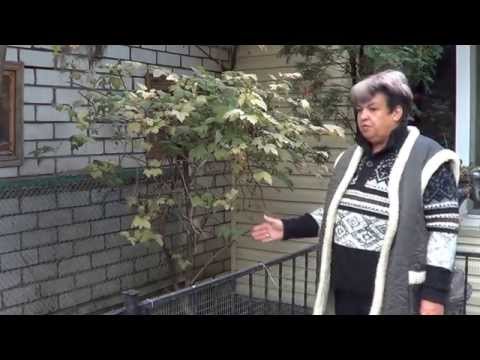

Watch this video on YouTube
Viburnum processing
Viburnum, like many other garden crops, is susceptible to various diseases, and various pests can also harm it. To protect the plant, you will need to regularly spray it for prevention purposes, and this is done in spring and autumn. To get rid of pests, plants are treated with insecticides, and fungicides are used to kill fungal diseases. Bacterial and viral diseases are incurable. But you should know that various pests and their larvae are the main carriers of such diseases, therefore it is so important to process plants in a timely manner and not forget about preventive spraying.
Watering viburnum
Kalina needs regular watering, which is recommended once a week, especially if there is a sultry dry period. For 1 bush that bears fruit, it should take 30-40 liters of water for 1 watering. A young bush does not need so much water, but it should be watered as well once a week. If there is a lot of rain in the summer, the frequency of watering will certainly change, but remember that this plant is moisture-loving, so you should not take too long breaks between waterings.
Feeding viburnum
Since the plant needs frequent watering, it is recommended to feed it with dry fertilizers. They are simply evenly distributed on the surface of the trunk circle, and therefore the bush is watered. The first time you need to feed the plant is in the spring, during the opening of the foliage, for this, a couple of large spoons of urea are poured under each instance. But they produce such spring feeding only if the bushes have not been treated with urea through dormant buds.
The second time the viburnum is fed before it blooms, and in this case, a fertilizer containing potassium is used. So, under each bush you need to pour a couple of large spoons of potassium sulfate or 500 ml of wood ash.
The third time such a plant is fed when it fades. To do this, a couple of large spoons of Nitroammofoski are poured under each copy.
The fourth and last feeding of the plant is needed only when the surface of its trunk circle is not covered with a layer of organic matter for the winter. For such feeding, a solution is taken, consisting of 1 bucket of water, in which two large spoons of superphosphate and potassium sulfate are dissolved. For 1 bush, 20 liters of such a nutrient mixture is taken.
Viburnum pruning
What time to trim
It is recommended to prune viburnum in the spring before sap flow begins. Pruning can also be carried out in the autumn after leaf fall, but before the onset of frost.It should be borne in mind that in the fall, experts recommend only sanitary pruning, and the rejuvenating and shaping ones are left for the spring.
Pruning viburnum in spring
In natural conditions, viburnum is a shrub or tree, therefore it is recommended to form it in the form of a tree or bush. In the spring, before sap flow begins, sanitary pruning should be performed. After that, a shaping haircut is performed. So, in order to give the viburnum the shape of a tree, it is necessary to cut out all the branches on the ring except one vertically located, while all the available buds in the lower part of the shoot should be cut off, since there will be a stem. It will take 2-3 years to remove the trunk. After its height is equal to 150-200 centimeters, it is necessary to pinch the growth point, as a result of this, branching will be stimulated. Cut out all root growth regularly, otherwise you will not get a tree, but a shrub. Do not forget to promptly remove all growing lateral shoots from the stem.
Regardless of whether the viburnum will be formed as a shrub or as a tree, it will need mandatory pruning. The fact is that over the years, the crown will become thicker and grow strongly, which will complicate the collection of fruits, while their quality will become worse over time, and their number will noticeably decrease. Opposing branches and stems, as well as those that grow in the wrong direction or inside the bush, must be cut out. To rejuvenate the shrub, you need to remove 1/3 of the old branches, while the most developed stems should be selected from the root growth and left. They will replace the cut out old branches. In the next season, you need to replace another 1/3 of the old branches. Well, for the third season, the remaining 1/3 of such branches are replaced.
To rejuvenate the viburnum tree, you should use the same scheme that is used for rejuvenating pruning of other fruit trees.


Watch this video on YouTube
Pruning viburnum in autumn
When all the leaves fall off the plant and it begins a dormant period, it will be necessary to prune for sanitary purposes. To do this, you need to cut out all injured, diseased and dried stems and branches. Places of cuts, the thickness of which is more than 0.7 cm, must be smeared with garden varnish. Pruning should be done on a sunny warm day.
Reproduction of viburnum
For propagation of viburnum, seed and vegetative methods are used. The plant can be propagated vegetatively by vertical and horizontal layering, cuttings and basal processes. It is quite difficult to propagate this culture with seeds, because they germinate for a very long time (within a couple of years). The easiest and easiest way to propagate it is vertical layering.
Viburnum propagation by seeds
In order for the seedlings to appear as soon as possible, the seeds must be subjected to pre-sowing preparation. Freshly harvested seeds should be poured into a nylon stocking, which is filled with moistened sawdust. They must be stored at room temperature for 8 weeks. After the seeds have sprouts, they will need to be removed for 4 weeks on the lower shelf of the refrigerator, intended for vegetables. Then the prepared seeds are sown in boxes, they need to be buried in the soil by 30–40 mm. In spring, when the frost has passed, it is necessary to transplant the seedlings into open soil. The planted plants will need abundant watering, and at first they will need to be protected from direct sunlight.
Viburnum propagation by vertical layering
In young specimens, the lower branches are shortened in the autumn, while 2 to 4 buds should remain on them. Its stem is subjected to high hilling. Shoots should grow out of the buds buried underground in spring, when their height is 8-10 centimeters, re-hilling should be done to a height of 40 to 50 millimeters.After the height of the shoots is 0.2–0.3 meters, they will need to be dug up and pulled at the base with copper wire. Then the shoots are again spud up to 1/3 of their height. After half a month, they are huddled again. In the autumn, the layers are dug up, cut off from the parent bush and planted immediately to a permanent place.
Viburnum propagation by cuttings
It is recommended to propagate viburnum with green cuttings, as they take root best. You should know that it is not easy to propagate such a culture by cuttings, but sometimes this method is the only one possible. They start harvesting cuttings during the flowering period of the bush (June or the first days of July), if you bend the shoot at this time, then it will spring, and not break. For the cutting, the middle part of the shoot is cut off, while 2 or 3 nodes should remain on it, and in length it should reach from 10 to 12 centimeters. The cut at the bottom must be made oblique. The lower leaf plates should be cut off, and those that are on top are shortened by ½ part.
The lower cut of the cutting should be dipped in Kornevin or placed in a Heteroauxin solution for 10–12 hours. Then they are planted in a soil mixture, which consists of peat and river sand (1: 1). They should be planted at an angle, while the cutting is buried in the soil by only 10–20 mm. The distance between the cuttings can vary from 40 to 50 mm. The planted cuttings should be covered with a dome on top, which should be transparent. Make sure that the air humidity inside the mini-greenhouse is 90 percent, and the temperature is from 27 to 30 degrees. Use a spray bottle to moisten the plants with clean water 3 or 4 times a day. After about 20 days, the cuttings should root. Then they begin to harden them, for this you need to remove the dome for a while every day. After the plants adapt to the new environment, the shelter can be removed permanently. For wintering, cuttings are left indoors. In the spring, the plants are hardened for fifteen days, and then transplanted into open soil according to the 50x15 centimeters scheme. The cuttings need to be grown. After they get stronger and grow up, they can be planted in a permanent place.
Viburnum propagation by horizontal layering
Choose a two-year or three-year branch in springtime. It should be cut off, leaving 2 to 4 buds on the cut. Next spring, after 1 year, a shoot should grow in this place, it must be shortened by 1/5 part. Then the shoot is bent to the soil and placed in a not very deep (50–60 mm) groove prepared in advance. The shoot is fixed with hooks, but you need to bury it only after the shoots that have grown from its buds have a height of 10 to 15 centimeters. When this happens, the groove is filled with humus, combined with peat, while taking into account that the tops of the branches should remain on the surface of the site. During the summer period, 2 or 3 hilling of growing layers should be made. In autumn, the buried shoot must be cut off from the mother plant, and the layers that have given the roots must be separated from each other and planted in a permanent place.
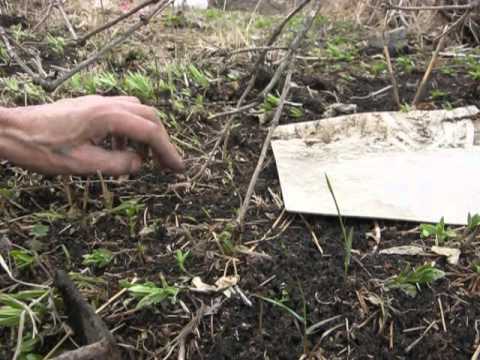

Watch this video on YouTube
Viburnum propagation by root shoots
Viburnum is propagated by root shoots very quickly and easily. In the last weeks of spring or the first - summer, you should choose the basal processes, the height of which should be about 20 centimeters. At the base, they are pulled with soft wire, and then spud to a height of 7 to 8 centimeters. In the summer, the shoots will need to be earthed 2 or 3 more times, while the mound should reach about 20 centimeters in height. With the onset of the next spring period, the shoots are cut off from the mother plant and planted in a permanent place.
Viburnum diseases with photos and descriptions
Viburnum grown in the garden is susceptible to various diseases.There are relatively few of them and it is possible to cope with them, however, experts recommend timely preventive treatment of the plant so that the plant is always healthy. The most common diseases will be described below.
Powdery mildew
Powdery mildew is a fungal disease. In the affected specimen, a whitish bloom with drops of liquid forms on the surface of the leaf plates; over time, it turns brown. The infection spreads from the bottom of the bush to the top. In the affected specimen, the ovaries are not formed, which means that no fruit appears. The bush becomes less frost-resistant. Decorative views become unattractive. To cure the plant, it is recommended to spray it with a solution of colloidal sulfur (50 grams of substance for 1 bucket of water), you can also use fungicides for treatment, for example: Skor, Tiovit Jet, Topaz, Bayleton, Topsin, Quadris and other means of similar action.
Frosty burn
With a strong drop in temperature in winter, the plant may experience a frost burn. As a result, cracking of the bark, exposure and dying off of wood occurs. In frost-damaged branches on lateral shoots, leaf plates are faded, chlorotic, they become brown and dry quickly. By the second half of the summer period, the entire plant may dry out. In early spring, shoots that have suffered greatly from frost must be cut out. Stems that have not very large frost burns are coated with liquid clay in places of damage.
Ascochitous spot of viburnum
If gray spots of a round or angular shape with dark brown or purple edging appear on the leaf plates, this means that the viburnum is infected with ascochitous spotting. Where spots have formed, tissue dies off, and fruiting bodies of the fungus appear on its surface. Gradually, such tissue becomes covered with cracks and spills out. To cure the plant, in the autumn, when all the foliage has flown around, it must be raked and destroyed. In spring, when sap flow just begins, it is necessary to treat the plant with Bordeaux liquid or copper oxychloride.
Gray rot
If there is damp, cool weather in the summer, then the likelihood of developing gray rot is high. In the affected specimen, large brown spots of indistinct outlines are formed on the leaf plates. Such spots grow very quickly in size, and the tissue in the middle of them cracks and dries up. Infected fruits turn brown, mycelium grows through them. In the autumn, it is imperative to rake up all the leaves and fruits that have flown around, and destroy them. Then the plant is sprayed with Vectra.
Fruit rot
If the viburnum is affected by fruit rot, then it has a drying out of leaf plates, flowers, young stems and berries. Initially, dense small pads of gray color appear, which eventually turn black and dry out. Affected mummified fruits must be torn off the plant without fail and removed from the surface of the site. As soon as it becomes clear that the bush is infected, it should be sprayed with copper oxychloride or Bordeaux liquid.
Viburnum pests with photos and descriptions
Kalina can harm a fairly large number of different pests. Those of them that pose the greatest danger to such a culture will be described below.
Viburnum leaf beetle
The viburnum leaf beetle is a small (about 0.6 cm long) beetle of pale brown color. Its larvae emerge from the soil in the first days of May. They eat the leaf plates of the plant, while only the veins remain of them. In the event that there are a lot of larvae, then they may not have enough foliage for all, then they begin to eat young shoots. Also, these larvae damage the viburnum berries.Females of such an insect gnaw grooves in the upper part of the shoot, in which they lay eggs. Because of such pests, the gardener can lose crops, and it also causes the plant itself to reduce its resistance to frost. Examine the tops of the shoots and cut off those where the egg has been laid. Then the viburnum needs to be sprayed with Fufanon or Karbofos.
Black leaf aphid
The black leaf-rolling aphid, like any aphid in principle, is the main carrier of diseases that cannot be cured. In this regard, if such an insect is found, all necessary measures should be taken to destroy it. Aphids feed on plant sap, sucking it out of the leaf plates, as a result of which they curl up. The foliage changes its color to brown, it deforms and dries up, the development of shoots stops. The ends of the shoots on which there is a colony of aphids should be cut off and destroyed. Spray the bush with Karbofos or Fufanon.
Viburnum leaf roll
Viburnum leafworm is a caterpillar of olive or dark-gray color. They first eat the buds, after that they entangle the leaves with cobwebs, crumple them and eat them. If there is a lot of such a pest on the bush, then this will have an extremely negative effect on the harvest. The caterpillar nests must be found and destroyed. Before the buds open, you need to spray the affected bush with Nitrafen solution (for 1 bucket of water 250 grams of paste). The second treatment should be carried out between the beginning of the opening of the buds and the formation of buds, for this use a solution of Karbofos (10%).
Viburnum and honeysuckle gall midges
The larvae of these insects settle for the winter in the upper layer of the soil. The appearance of adults is observed during the formation of buds, in which they arrange egg-laying. The larvae eat the buds, making them bloated, red, and ugly. Damaged buds do not open. At the beginning of the spring period or in late autumn, it is necessary to thoroughly loosen the surface of the trunk circle. Before the viburnum blooms, it must be sprayed with a solution of Karbofos (10%).
Green lobed moth
The green lobed moth is capable of harming viburnum, lilac and buckthorn. This pest is a greenish-yellow caterpillar that damages flower ovaries. They get rid of it in the same way as the gall midges.
Types and varieties of viburnum with photos and descriptions
There are a very large number of viburnum species. Only part of the species is cultivated by gardeners, the rest can be found only in natural conditions. Below will be a description of those types that are the most popular.
Viburnum (Viburnum opulus), or red viburnum
This species began to be cultivated a long time ago. It is grown both as an ornamental and as a fruit plant. The height of this shrub is about four meters. On the surface of its stems there is a brown fractured crust. Lobed large leaf plates are pale green in spring, deep green in summer, and various light red shades in autumn. Small white flowers are part of the corymbose inflorescences, which reach about 10 centimeters in diameter. The fruits are edible juicy red drupes, their shape is elliptical or round. Inside the fruit there is a large flat bone and red juice.
Decorative forms:
- Nanum... The height of this dwarf viburnum is about 100 centimeters.
- Roseum... Most often, this variety is called Boule de Nezh.
- Compactum... The height of such a viburnum can vary from 100 to 200 centimeters.
- Aureum... In the spring, the leaf plates have a very rich yellow color; in the summer, it changes to greenish.
- Variegata... Plant height is about 450 centimeters, the color of the foliage is marble-white.
- Xanthocarpum... A not very tall plant, the foliage of which is colored yellow, and the fruits are orange.
The most popular fruit varieties of red viburnum:
- Garnet bracelet... The variety is late, fruitful and resistant to aphids. The spreading bush is medium-sized. The fruits are oval, maroon color, covered with a dense shell, weighing about 1 gram. They have a rather pleasant bitter taste.
- Shukshinskaya... Such a mid-season fruitful variety was named after the director, writer and actor V. Shukshin. The spherical berries have a deep red color and a pleasant taste. On average, they weigh about 0.5 grams.
- Maria... This variety is resistant to diseases, vigorous bush. The compact clusters are composed of rounded reddish fruits with a sweet-sour taste with a slight astringency. In autumn, the foliage changes its color to crimson and gold.
- Taiga rubies... This variety is mid-season and very productive, has no resistance to leaf-eating pests. The berries are round, dark red in color, they are sweet-sour, have a slight bitterness. In autumn, the leaves turn purple.
- Zholobovskaya... This is a versatile variety. The bush is compact. Juicy berries are slightly elongated, they are almost sweet with a barely noticeable bitterness. In autumn, the foliage takes on a burgundy color.
- Elixir... This productive variety is aphid resistant. Slightly spreading bush in height reaching about 300 centimeters. Round berries of deep burgundy color weigh about 1 gram. Their flesh is sweet-sour with moderate bitterness.
- Vigorovskaya... The height of the bush of this fruitful variety is about 300 centimeters. The deep red globular berries weigh about 0.5 grams. The pulp is bitter and sour.
The following varieties of fruit viburnum are also popular: Ulgen, Uralskaya sweet, Souzga, Ryabinushka, Sunset, Zarnitsa, Red bunch, etc.
Kalina wrinkled (Viburnum rhytidophyllum)
Under natural conditions, this species can be found in Central and Western China. It is widespread in mid-latitudes, this viburnum is grown both in parks and in gardens, because it is highly resistant to frost. This evergreen viburnum, reaching a height of 300 centimeters, has original leaf plates. Stems are straight, densely tomentose. Thick, bare, glossy sheet plates have a wrinkled surface, and their underside is fleecy and reticulate. In length, they reach 20 centimeters. The shield-shaped apical inflorescences, which have a diameter of about 20 centimeters, are composed of gray-yellow flowers. The diameter of the small, glossy ovoid fruits is about 0.8 cm, at first they are colored red, but when ripe they turn black. This variety is resistant to drought and frost, shade-loving and undemanding to the composition of the soil. These plants look great both in single plantings and in small groups. The most popular variety is Superb.
Laurel viburnum (Viburnum tinus), or evergreen viburnum
Under natural conditions, this species is found in the Mediterranean. This ornamental shrub, reaching a height of 300 centimeters, is evergreen. Young stems are glabrous, pubescent, and annual growths are brown. The foliage of such a plant is very attractive. So, the form of leathery whole-edged leaf plates is elliptical, their front surface is rich green and glossy, and the back has a lighter color and pubescence along the veins. The diameter of the umbellate panicle inflorescences is about 10 centimeters, they consist of fragrant pinkish-white flowers. Dryish spherical ovate berries are blue-black. This plant is resistant to drought, warm and light-requiring, unpretentious to the ground, it is not afraid of frosts down to minus 15 degrees. This shrub is used to create a hedge or as a solo plant. Decorative forms: purple, variegated, lustrous and upright.
Kalina gordovina (Viburnum lantana)
This type is the most popular in culture. In natural conditions, it is found in Southern and Central Europe, in the North Caucasus, in North Africa and in Asia Minor. The plant is a light-loving mesophyte. This species is significantly different from the common viburnum. The plant reaches a height of about 5 meters and has a lush dense compact crown. On the surface of the stems and leaf plates, there is a dense coating consisting of white stellate hairs. The foliage is very beautiful, it is wrinkled, dense to the touch, up to 18 centimeters long. The leaf plates are wide, their front surface is dark green, and the back is light gray felt. The corymbose inflorescences include small (about 15 mm in diameter) flowers of a creamy white color. At first, the berries are red, and after ripening they turn black. This type of viburnum is one of the most beautiful ornamental shrubs. It is resistant to drought, frost, gas pollution, shade-loving. Pink-red foliage and glossy black fruits remain on the branches until winter. Decorative forms: wrinkled and variegated. The most popular variety is Aureum: oval-shaped leaf plates have a golden front surface and a felt-silver one on the back.
Also among gardeners, the following types of viburnum are quite popular: David, forked, Buryat or black, toothed. Canadian, Karlsa, Mongolian, useful, recognized, Wright, Sargent, folded, syrupy, edible, three-lobed, bristly, etc.
Viburnum properties
Useful properties of viburnum
Despite the fact that viburnum berries are not very tasty, they have incredibly useful and medicinal properties. In its healing qualities, it surpasses raspberries, blueberries, currants, blueberries and elderberries. The fruit pulp contains a lot of vitamins C and P, organic acids, carotene, pectins and tannins.
Such fruits are recommended for edema due to diseases of the kidneys, urinary tract and heart, because they have a diuretic effect. The berries contain astringent and antiseptic substances, thanks to which ulcers and wounds of the digestive tract heal. Such fruits help to strengthen the immune system, therefore they are advised to be eaten during the recovery period after a serious illness. Kalina helps well in the treatment of tuberculosis, internal bleeding, diathesis, nervous disorders, convulsions, diseases of the liver, kidneys, gastrointestinal tract (gastritis, colitis, ulcer), with atherosclerosis, sclerosis, vascular spasms and coughs. They are also used as an antispasmodic and sedative.
Fresh and dried fruits, their juice, decoction and infusion made from them, as well as berries boiled in honey have healing properties. The fruits boiled in honey, for example, are used for diseases of the upper respiratory tract, they perfectly remove coughs. It is also used for edema associated with heart disease.
Nourishing and cleansing masks for the skin of the face are made from the fruits of such a plant. A decoction and infusion made from them is used in the treatment of boils, carbuncles and eczema.
The flowers, foliage and bark of viburnum also contain medicinal substances. An infusion made from flowers can eliminate pain during menstruation and cure gastritis with low acidity. A decoction of viburnum flowers is recommended to gargle with shrunken ligaments and sore throat. It also helps to stop bleeding, improve appetite and increase sweating. A decoction made from buds and young shoots has anti-inflammatory and antipyretic properties, it is used for advanced scrofula and diathesis.
Viburnum is used for making jams, drinks, jams, mousses, as well as tinctures, creams, shampoos, tonics, as well as cosmetics for the skin of the face.
Contraindications
In the juice of viburnum fruits there is an analogue of female hormones, therefore, pregnant women are prohibited from eating them.Otherwise, it can cause the development of pathologies in the fetus or lead to premature birth. Also, in some pregnant women, viburnum causes an allergic reaction.
A person with low blood pressure cannot eat a lot of viburnum or use funds from it. Also, it can not be eaten by people who have high acidity of gastric juice, suffering from chronic kidney disease, leukemia, thrombophlebitis and other blood diseases. Viburnum is also not recommended for people with arthritis, gout and urolithiasis.
Important! Only red fruits can be eaten. Viburnum species with black berries can be poisonous!
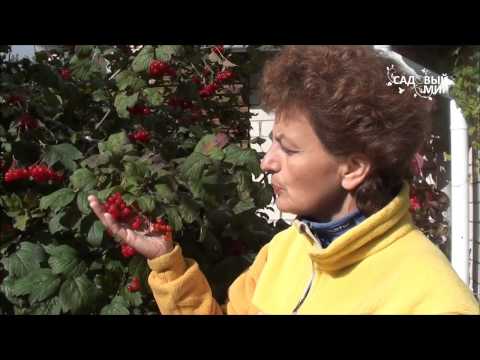

Watch this video on YouTube

